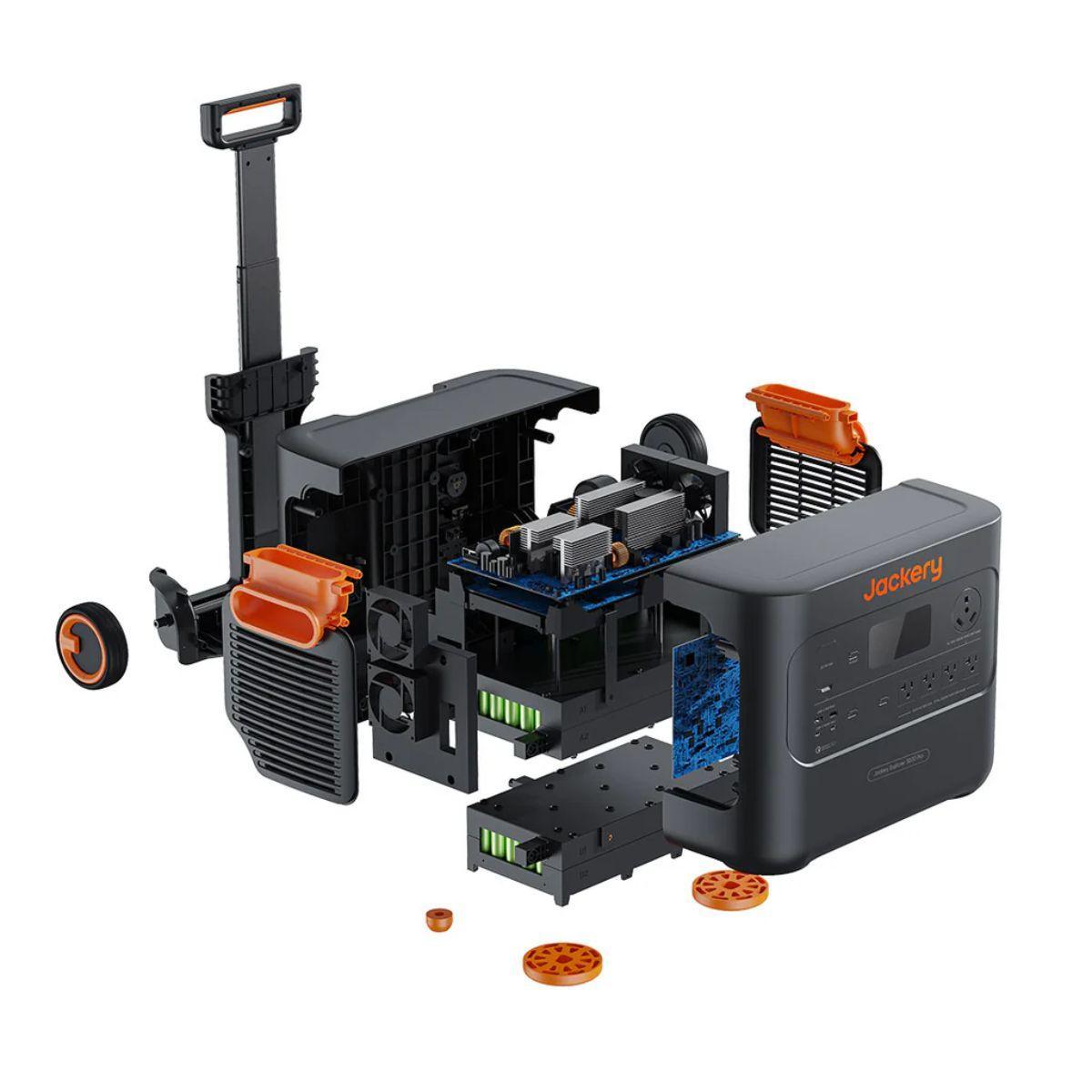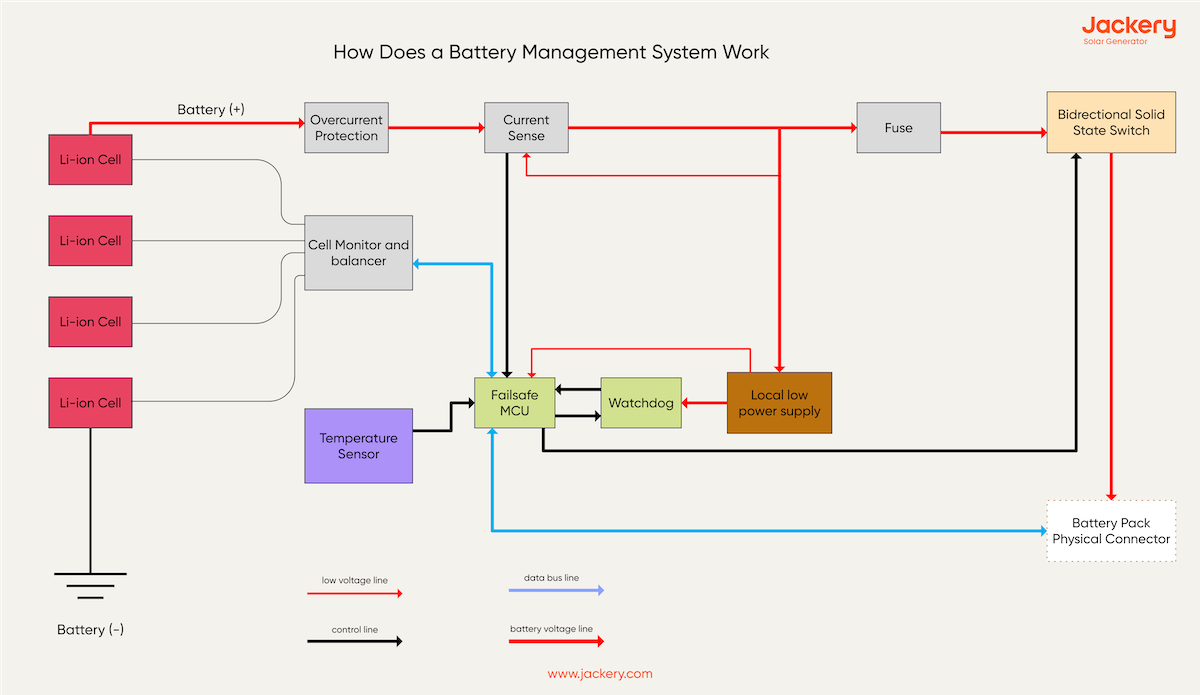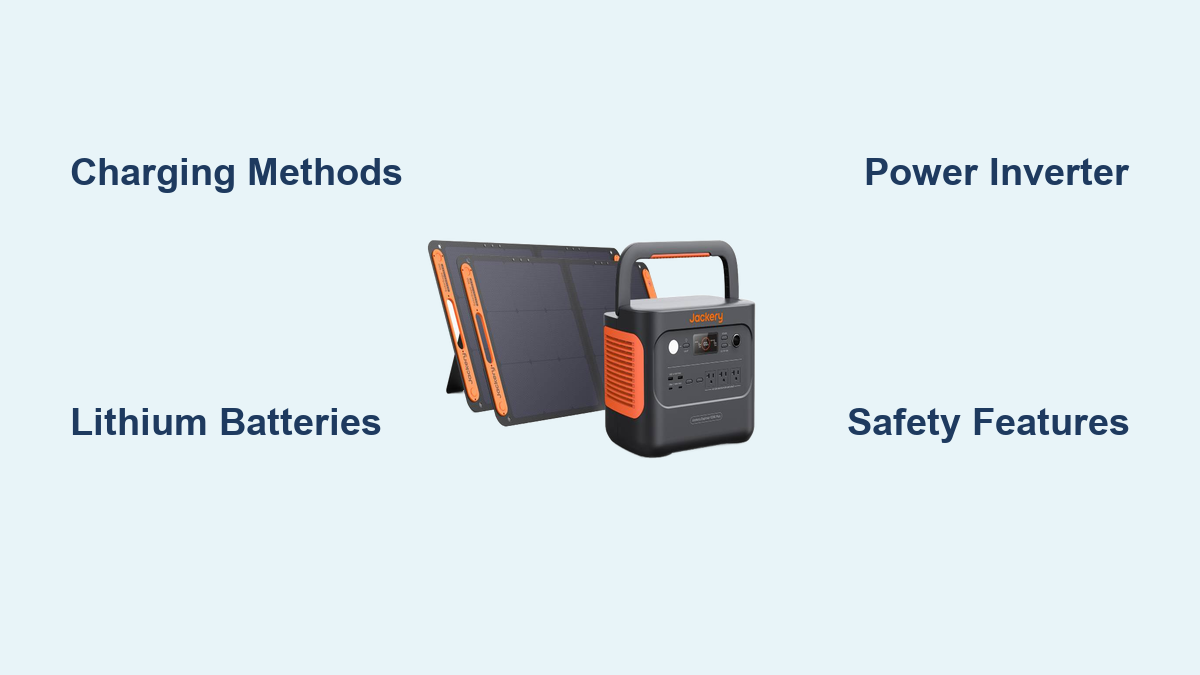Are you frustrated trying to understand how a Jackery portable power station can benefit you, or feeling overwhelmed by the different models and technologies? Many people are curious about these devices, recognizing their potential for camping, emergencies, or simply powering devices off-grid, but aren’t sure how they actually work. A quick understanding is that Jackery stations store power in lithium batteries, allowing you to run devices without a wall outlet.
This comprehensive guide will dive deep into the mechanics of Jackery portable power stations, explaining how they function, the key components involved, different charging methods, safety features, and how to choose the right model for your needs. By the end of this article, you’ll have a complete understanding of Jackery technology and be confident in utilizing its power.
How Jackery Portable Power Stations Function

Jackery portable power stations aren’t generators in the traditional sense; they don’t burn fuel. Instead, they function as large batteries with the ability to both store and deliver electrical power. Here’s a breakdown of the core processes:
Charging the Jackery
Jackery stations are charged using various methods, converting energy from different sources into DC (Direct Current) electricity, which is then stored within the battery. These methods include:
- AC Wall Outlet: The most common method, using the included AC adapter to convert standard wall power.
- Solar Panels: Jackery solar panels convert sunlight into DC electricity, directly charging the station.
- Car Charger: Utilizing a 12V car outlet to charge the station while driving.
Storing the Power – Lithium Batteries
The heart of a Jackery station is its lithium battery. Specifically, Jackery primarily uses Lithium Iron Phosphate (LiFePO4) batteries in their newer models, and Lithium-ion in older models.
- Lithium Iron Phosphate (LiFePO4): These batteries are known for their safety, longevity (thousands of cycles), and thermal stability. They are more expensive than Lithium-ion but offer significantly improved performance and lifespan.
- Lithium-ion: Still found in older Jackery models, these are lighter and more energy-dense, but have a shorter lifespan and are more sensitive to temperature.
The battery stores the DC electricity, ready for use. Battery capacity is measured in Watt-hours (Wh) – a higher Wh rating means more stored energy and longer runtimes for your devices.
Delivering Power – Inverters
Most devices run on AC (Alternating Current) electricity. Jackery stations convert the stored DC electricity into AC electricity using an inverter. The inverter is a critical component, determining the maximum wattage of devices you can power simultaneously.
- Pure Sine Wave Inverter: Jackery stations use pure sine wave inverters, which provide a clean and stable AC output. This is essential for sensitive electronics like laptops, smartphones, and medical devices. Modified sine wave inverters, found in cheaper power stations, can sometimes damage these devices.
- Wattage Ratings: Jackery stations come with different wattage ratings (e.g., 200W, 500W, 1000W). This indicates the maximum continuous power the station can deliver. Surge wattage is a higher peak power available for a short period to start devices with motors (like refrigerators).
Jackery Charging Methods Explained
Let’s look at each charging method in detail:
Method 1: AC Wall Charging
Diagnosing the Issue: Ensure the AC adapter is securely plugged into both the Jackery station and a working wall outlet.
Fix Steps:
1. Connect the AC adapter to the Jackery port.
2. Plug the adapter into a functioning wall outlet.
3. The Jackery display will indicate charging status.
Testing: Monitor the display for charging progress. Charging time varies based on station capacity and adapter wattage.
Method 2: Solar Charging
Diagnosing the Issue: Confirm compatible Jackery solar panels are used and positioned for optimal sunlight exposure.
Fix Steps:
1. Connect the solar panel(s) to the Jackery station using the appropriate solar charging cable (typically an MC4 connector).
2. Position the panels facing direct sunlight, adjusting the angle throughout the day.
3. The Jackery display will indicate solar charging status.
Testing: Observe the charging rate on the display. Cloudy conditions will reduce charging efficiency.
Method 3: Car Charging
Diagnosing the Issue: Verify the car’s 12V outlet is functioning correctly.
Fix Steps:
1. Connect the car charger adapter to the Jackery station.
2. Plug the adapter into the car’s 12V outlet.
3. The Jackery display will indicate charging status.
Testing: Monitor the display for charging progress. Car charging is the slowest method and is best for maintaining charge during long drives.
Safety Features in Jackery Power Stations

Jackery stations are designed with multiple safety features to protect both the station and connected devices:
- Battery Management System (BMS): This system constantly monitors battery voltage, current, and temperature, preventing overcharging, overheating, and short circuits.
- Overload Protection: The inverter automatically shuts down if the connected devices exceed the station’s wattage capacity.
- Short Circuit Protection: Prevents damage from accidental short circuits.
- Temperature Protection: Shuts down the station if it gets too hot or too cold.
- Surge Protection: Protects against voltage spikes and surges.
Pro Tips for Jackery Users
- Maximize Solar Charging: Use Jackery solar panels specifically designed for their stations for optimal compatibility and efficiency. Angle the panels towards the sun for maximum energy capture.
- Store Properly: When not in use, store the Jackery station in a cool, dry place, away from direct sunlight. Partially charge the battery (around 50-60%) for long-term storage.
- Understand Wattage Needs: Before purchasing, calculate the total wattage of the devices you plan to power to ensure the Jackery station has sufficient capacity.
- Prioritize Essential Devices: During emergencies, prioritize powering essential devices like lights, communication devices, and medical equipment.
- Regularly Check Firmware: Jackery occasionally releases firmware updates to improve performance and add new features. Check the Jackery website for updates.
Professional Help
If your Jackery station is not functioning correctly despite troubleshooting, or you suspect a battery issue, contact Jackery customer support. Signs you might need professional help include:
- The station won’t charge at all.
- The battery drains rapidly.
- The station overheats or emits unusual odors.
- The inverter is not producing AC power.
Typical warranty periods are 2 years, but extended warranties are sometimes available.
FAQ
Q: Can I use any solar panel with my Jackery station?
A: While technically possible with adapters, it’s best to use Jackery-branded solar panels for optimal compatibility and efficiency.
Q: How long will a Jackery station last on a single charge?
A: Runtime depends on the station’s capacity (Wh) and the wattage of the devices being powered.
Q: Is it safe to leave a Jackery station charging overnight?
A: Yes, the BMS prevents overcharging, making overnight charging safe.
Q: What is the difference between Wh and Watts?
A: Watts (W) measure power, while Watt-hours (Wh) measure energy. Think of Watts as the rate of energy use, and Watt-hours as the amount of energy stored.
Alternative Solutions

If a Jackery station doesn’t quite meet your needs, consider these alternatives:
| Solution | Pros | Cons | Best For |
|---|---|---|---|
| Goal Zero Yeti | Rugged design, wide range of models | More expensive than Jackery | Off-grid adventures, demanding power needs |
| Bluetti Power Stations | High capacity, fast charging | Can be bulky and heavy | Whole-home backup power, extended outages |
| EcoFlow Delta | Fastest charging speeds | Pricey | Those needing quick power replenishment |
Enjoy Your New Portable Power!
Now you have a solid understanding of how Jackery portable power stations work! You’ve learned about charging methods, key components, safety features, and how to choose the right model for your lifestyle.
Remember these key takeaways:
* Jackery stations store DC power in lithium batteries.
* Inverters convert DC to AC power for running everyday devices.
* Safety features protect both the station and your electronics.
Don’t hesitate to share your experiences with Jackery in the comments below! What are you planning to power with your new portable power station?

